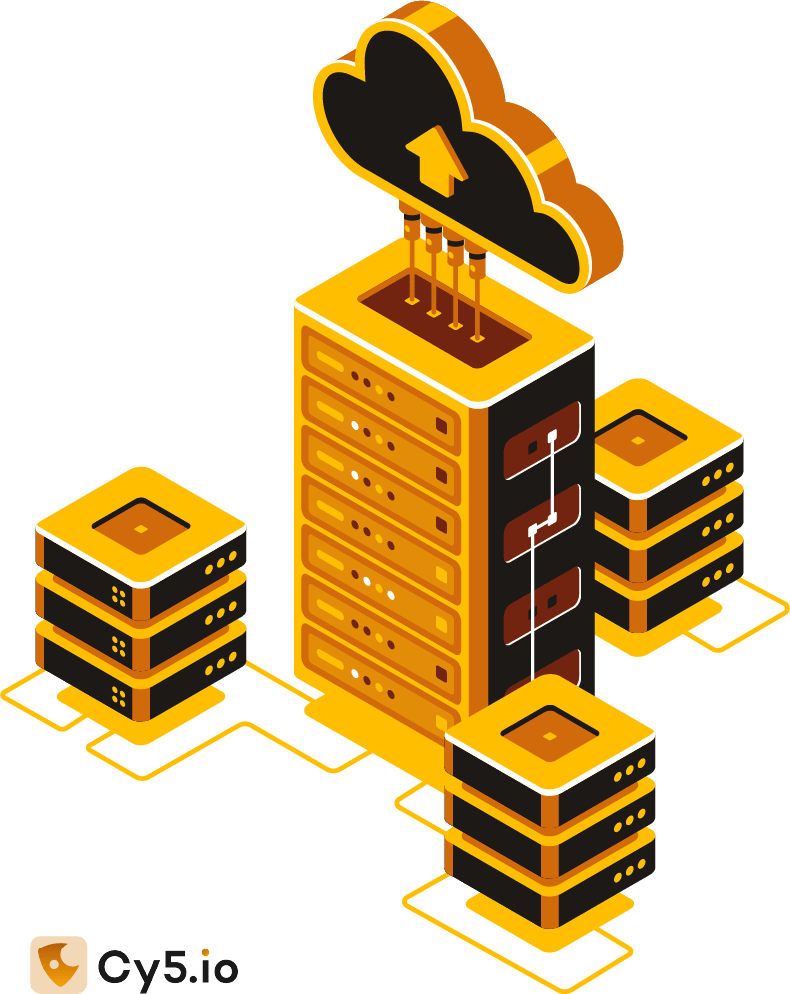In the present domain of cloud computing, the notion of traditional security parameters is diminishing. Currently, the usability of firewalls and network boundaries shortfall to ensure robust security of the public cloud environment. The attack surface in the cloud is shifting and evolving at the same time as the ‘identities’ at the cornerstone. That’s why the importance of identity as an attack surface has become a priority for security leaders across the globe.
Businesses around the world are employing cloud technologies for their day-to-day operations, and identities are one of the crucial elements in them. These identities can be user accounts, service accounts, and APIs; are new perimeters of cloud security. That’s why threat actors are largely targeting these identities to gain unauthorized access, exploit sensitive data, and escalate privileges. In the past year, a staggering 90% of organizations suffered security breaches linked to identity vulnerabilities, with 93% of these compromises being avoidable through enhanced identity security measures (Source: Software Analyst Cyber Research).
This blog is focused completely around the anatomy of cloud attack surface to explore the role of “identities” as an evolving parameter. It will also provide you with actionable strategies to secure your public cloud environment.

The Evolution of Cloud Attack Surfaces
From Network-Centric to Identity-Centric Security
Traditionally, security was focused on protecting network boundaries in on-prem environments. The primary tools employed during these scenarios were intrusion detection systems, firewalls, and VPNs, to ensure the protection of resources from threat actors.
Since, businesses started adopting cloud for better operability, the domain of security has expanded exponentially. Applications and data are now being distributed across multiple platforms and the network parameters have dissolved.-
According to Software Analyst Cyber Research, 37% of organizations found that enabling multi-factor authentication (MFA) for all users effectively prevented or reduced the impact of incidents. Additionally, 42% of organizations highlighted the benefits of periodic reviews of access rights to sensitive data, while 50% stressed the importance of regular audits of privileged access. This shift in underlying technology has forced organizations to rethink their security strategies. Today, security modules for identities are equally important as securing networks in the public cloud domain.
Check Out More About: CSPM: Realtime Cloud Security for Proactive Protection
How Cloud Adoption Has Redefined Attack Surfaces
As businesses continue to adopt cloud for their business operations, the complexities and security risks are rising every day. They are employing multiple cloud providers for different sets of activities. They deploy countless applications and generate massive amounts of data. Each of these entities expands the attack surface, unknowingly creating new opportunities for attackers.
For example, a misconfigured API or an over-permissioned service account can provide attackers with a direct path to sensitive data.
Why is Identity the New Perimeter in Cloud Security?
The Shift from Network Boundaries to Identity Boundaries
In the cloud computing domain, identities are the new perimeter. Unlike traditional networks, which have clear boundaries, cloud environments are dynamic and decentralized. This makes identities the primary target for attackers.
For instance, a compromised user account can give attackers access to multiple cloud services, while a misconfigured API can expose sensitive data to the internet.
Check Out Another Blog: Top 5 Strategies to Minimize Cloud Attack Surface in 2025
How Attackers Exploit Identity as the Primary Attack Vector
Attackers are increasingly targeting identities because they provide a direct path to sensitive data and critical systems. Common tactics include:
- Credential Theft: Using phishing or brute-force attacks to steal login credentials.
- Privilege Escalation: Exploiting over-permissioned accounts to gain higher levels of access.
- Lateral Movement: Using compromised identities to move across cloud environments and access additional resources.
For example, in 2022, a major cloud provider suffered a breach when attackers exploited a misconfigured IAM policy to access customer data.
Key Components of a Modern Cloud Attack Surface
Identities: User Accounts, Service Accounts, and APIs
Identities are among the crucial elements that serve as the backbone of cloud operations, which is becoming primary target for attackers. Several key components are-
- User Accounts; human users with access to cloud resources.
- Service Accounts; non-human accounts used by applications or services.
- APIs; interfaces that allow applications to communicate with cloud services.
Each of these components represents a potential entry point for attackers.
Data Stores and Their Vulnerabilities
Data is a fuel for businesses and thus a prime target for attackers. In the cloud, data gets stored in the form of databases, object storage, and data lakes are quite largely misconfigured or overexposed, making them vulnerable to attacks.
For example, a misconfigured S3 bucket can expose sensitive data to the internet, while an unencrypted database can be easily exploited.
Misconfigured Cloud Services and Their Risks
Misconfigurations are one of the leading causes of cloud breaches. Common issues include:
- Over-permissioned accounts.
- Unrestricted access to APIs.
- Lack of encryption for sensitive data.
These misconfigurations create vulnerabilities that attackers can exploit to gain unauthorized access.
A Case Insight
In January 2022, Microsoft’s AI team publicly shared a GitHub repository containing links to Azure blob storage containers designed for open dataset distribution. However, a critical misconfiguration in the Shared Access Signature (SAS) tokens—temporary credentials granting storage access—exposed unintended risks. Instead of restricting permissions to read-only, the tokens were improperly set to full control. This oversight allowed potential attackers to modify, delete, or exfiltrate all files within the storage account—far beyond the intended public datasets (Source: CSO Online).
Strategies for Securing Identity as the Primary Attack Vector
Implementing Identity-Centric Zero-Trust Frameworks
Zero-trust is a security model that assumes no user or device is trusted by default. In the cloud, zero-trust principles require continuous verification of identities and strict enforcement of access controls.
For example, a user accessing a cloud application from a trusted device must still verify their identity and meet access requirements.
Actionable Tip: Implement zero-trust principles for your most sensitive data and applications. Gradually expand to cover your entire cloud environment.
Continuous Monitoring and Behavioral Analysis
Proactive monitoring is essential for detecting and responding to identity-based threats. AI-driven tools can analyze user behavior and flag anomalies, such as unusual login times or access requests.
For example, if a user account suddenly attempts to access sensitive data from a foreign country, the system can trigger an alert and require additional verification.
Actionable Tip: Invest in cloud-native security tools that offer real-time monitoring and threat detection.
Reducing Identity Sprawl and Over-Permissioning
Identity sprawl—the proliferation of user and service accounts—is a common issue in cloud environments. Over-permissioned accounts exacerbate the problem, providing attackers with easy targets.
To reduce identity sprawl and over-permissioning:
- Regularly audit IAM policies and permissions.
- Implement just-in-time (JIT) access to grant temporary permissions.
- Use role-based access control (RBAC) to enforce least privilege access.
Actionable Tip: Automate IAM policy enforcement to ensure consistent and secure access controls.
Real-World Examples of Identity-Centric Attacks
Case Study 1: Exploitation of Cloud APIs
In 2023, a retail company suffered a breach when attackers exploited a misconfigured API to access customer data. The API had weak authentication and excessive permissions, allowing attackers to exfiltrate sensitive information.
Lesson Learned: Secure APIs by implementing strong authentication, enforcing least privilege access, and regularly auditing permissions.
Case Study 2: Breaches Due to Misconfigured IAM Policies
A financial services company experienced a breach when attackers exploited an over-permissioned service account. The account had access to sensitive customer data, which the attackers exfiltrated and sold on the dark web.
Lesson Learned: Regularly review and restrict permissions for service accounts to minimize the risk of exploitation.
Conclusion: Embracing Identity-Centric Cloud Security
The Importance of Adapting to New Security Paradigms
As the cloud landscape continues to evolve, organizations must adapt to new security paradigms. Identity-centric security is no longer optional—it’s a necessity. By focusing on securing identities, organizations can reduce their attack surface and protect their cloud environments.
Future Trends in Identity-Centric Cloud Security
In the coming years, we can expect to see continued innovation in identity-centric security. Emerging technologies, such as AI-driven identity governance and zero-trust frameworks, will play a key role in securing identities and mitigating risks.
By staying ahead of these trends and implementing best practices, organizations can build a secure, resilient cloud environment.
Final Thoughts
In the cloud, identities are the new perimeter. Securing them requires a proactive approach that combines robust authentication, least privilege access, and continuous monitoring. By addressing identity-related vulnerabilities, organizations can significantly reduce their attack surface and protect their cloud environments.
As you navigate the complexities of cloud security, remember that identities are only as strong as your weakest link. Don’t let them become your downfall.








